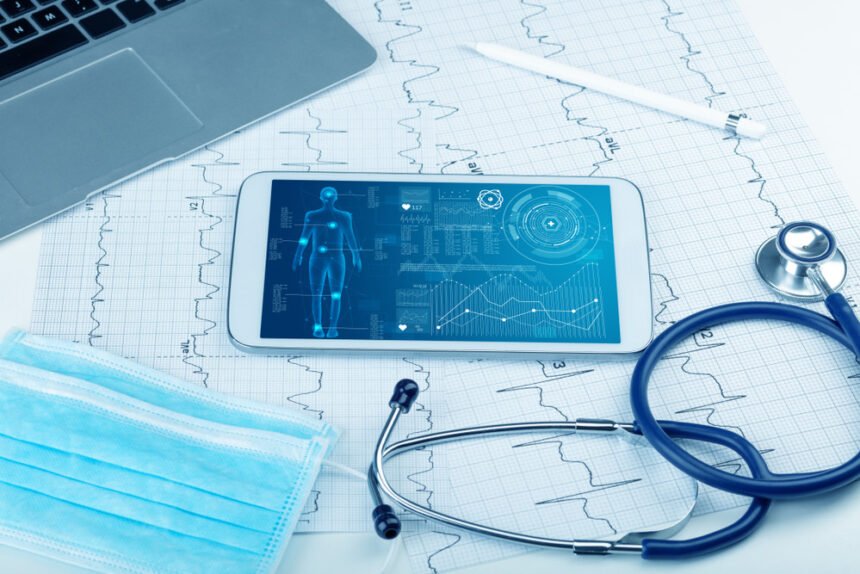We have previously talked about some of the biggest ways that policy makers and the healthcare sector are using big data to fight COVID-19. Their approach has evolved in recent weeks, as they find ways to use EMS data to streamline their response.
EMS Data Changes the Roadmap to Fighting COVID-19
COVID-19 has changed how hospitals and EMS services function dramatically. Due to the impact that the virus has had on their systems, the healthcare field will likely be changed forever. This sector is using data to control the pandemic and will likely use these new approaches to curb future healthcare crises in the months to come. All areas of EMS are being stretched thin; ambulances, fire departments, and even the police are playing crucial roles in today’s healthcare system.
Emergency medical services software and general EMS services have had to serve a more pivotal role across the nation than ever before. These responders come into contact with the virus and the effects it has on a daily basis. The International Association of Fire Chiefs (IAFC) has had to fully implement new tracking systems in order to fully understand the pandemic’s impact and their responses to that impact.
But how are hospitals using EMS data during COVID-19?
Planning and Preparation Have to Improve
This pandemic is far from over, especially in the United States. So, it is time to start looking for ways that emergency services can provide data to help serve patients more effectively. Hospitals could be missing out on critical data before the patient comes through the doors.
We previously mentioned that freight companies and other industries are using big data to slow the outbreak. But big data is even more important for healthcare providers.
EMS provides hospitals with crucial data. Recent data has shown a link between hospital diagnosis with essential characteristics of COVID-19 EMS encounters. This is why having EMS share data with hospitals is very critical. When there is a full picture of the virus to look at, the ability to leverage every data source and care before arriving at the hospital is vital.
Bringing EMS staff into emergency management meetings is now common practice so that they are involved in the hospital’s planning process. When both parties work together, care can be improved at every point throughout the process and provide staff with advantages to fight against illnesses. This also helps EMS have more insight into how to best work with hospital staff during this stressful time.
There is Immediate Access to Crucial Data
The more data that is immediately available, the easier it becomes to make crucial decisions. EMS are the people collecting all data before a patient arrives at the hospital. Here are a few data points EMS provides hospitals that have become critical to helping with COVID-19 responses:
- Possible exposure to patients that have been confirmed positive: EMS identifies that a patient has been confirmed to have COVID-19 through testing. This gives hospital staff the ability to be prepared for that when interacting with the patient. This also gives EMS and hospitals a HIPAA-compliant way to discuss exposures to the virus so that contact tracing can be much more comfortable.
- Testing for COVID-19: With testing easily accessible and affordable, medical personnel can adapt to the influx of newer patients. This helps hospital staff and EMS prepare themselves for possible contacts with patients by giving them the ability to stock necessary PPE and other essential equipment. They are also able to take more precautions to avoid possible contamination from patients.
- The use of PPE: There is a way for EMS to document the amount and kind of PPE that must be used. This helps show an overall usage of PPE in the area and helps suppliers provide the correct amount of equipment in the future. This data point is crucial for ensuring that hospital and EMS staff are as protected as possible in the situation that they may be exposed to the virus.
Hospitals are Connecting More with EMS
Before COVID-19 even existed, most hospitals and emergency departments were already working on ways to improve communication processes with EMS agencies. Hospitals and EMS personnel already recognized the value of sharing data and building working relationships with each other, but it had not yet been fully implemented to it’s potential.
Emergency software tools allow for the automation of the data exchange process and make sharing data across all boards even more realistic. This not only makes receiving care before reaching the hospital accessible more quickly to help staff run on a more efficient basis in the emergency department, but it also helps to close gaps with EMS. With this kind of EMS software, the team is able to learn and provide a full picture of the spectrum of patient care.
Conclusion
It has remained clear that COVID-19 is not going to disappear in the foreseeable future magically. Hospitals that wish to move ahead are making updates to their policies and processes to find new ways to care for the communities and keep staff protected.
Being able to gain as much insight before a patient reaches the hospitals is going to continue to be a key component in the process, making EMS data sharing even more vital than ever.
If hospitals and EMS continue to find new ways to share data and prepare better for incoming patients, handling of both the virus and other emergencies can only improve.

